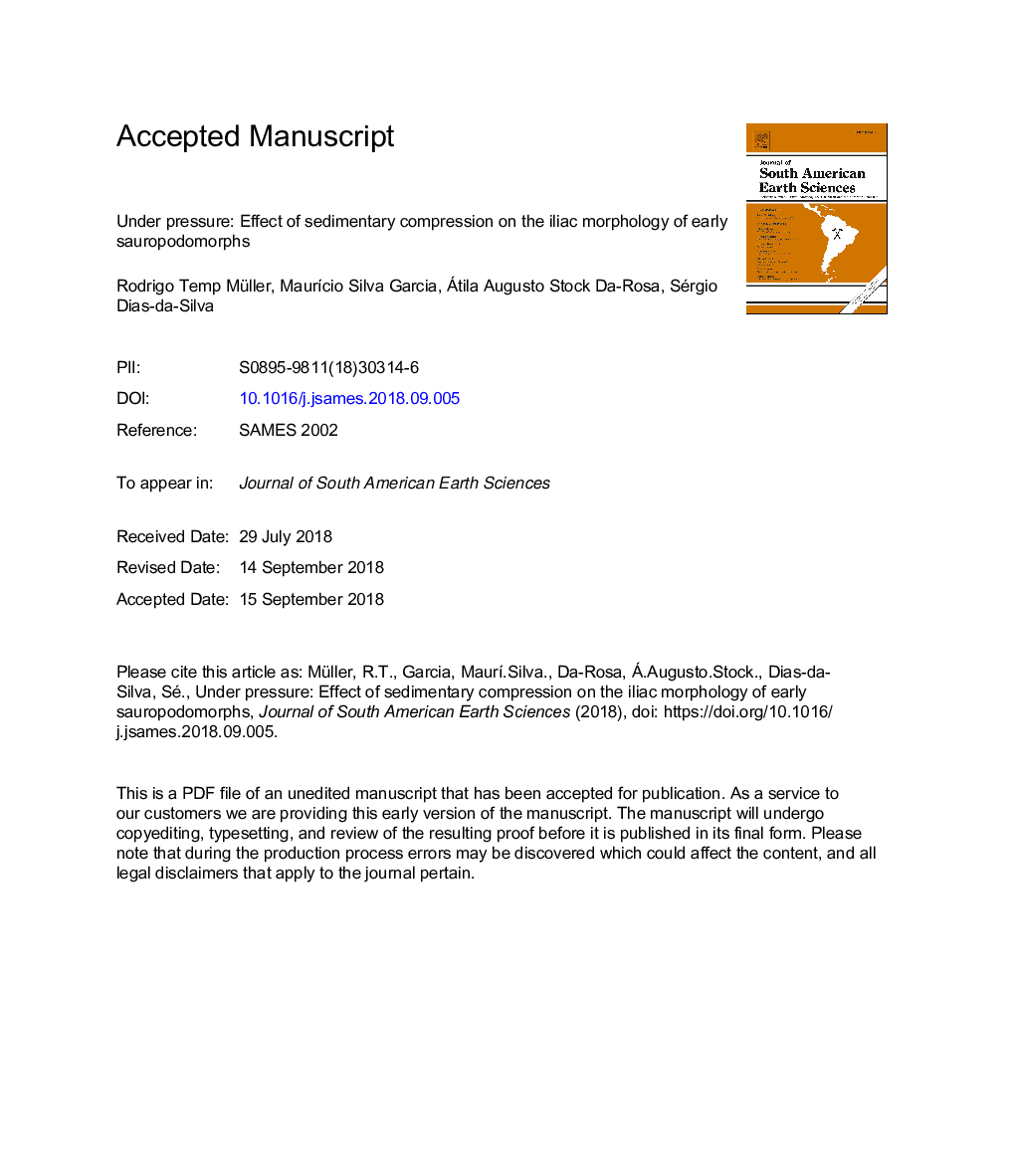| Article ID | Journal | Published Year | Pages | File Type |
|---|---|---|---|---|
| 11033114 | Journal of South American Earth Sciences | 2018 | 31 Pages |
Abstract
Sedimentary compression can produce deep changes in the organismal morphology during fossil diagenesis, so that intrinsic biological aspects (e.g. internal architecture of bones) could also generate non-natural traits when determinate bone element suffers sedimentary compression. Here we report a particular taphonomic case, in which the mode of preservation of a basal sauropodomorph from the Late Triassic of Brazil offers a valuable opportunity to examine the effects of sedimentary compression on a specific doubled body part of a single individual. The specimen is associated with two other almost complete and articulated individuals, comprising a monotypic association. The specimen herein studied presents the left ilium and hindlimb disarticulated from its body, where the right ilium was preserved with its ventral surface ventrally directed, and, conversely, the lateral surface of the left one was ventrally directed. Thus, their distinct placement in the substrate resulted in two distinct taphonomic histories reflected in their dissimilar shapes. This corresponds to a particular case of taphomorphic differences expressed in a single individual. Indeed, some of the peculiar traits of each ilium also occur in other specimens of close related taxa that experienced similar taphonomic histories. Sedimentary compression may produce dissimilar shapes in different portions of the skeleton, and incorrect observations generate what we call “taphoanatomical features”, traits shared among close phylogenetic taxa/specimens resulting from similar taphonomic processes in response to specific biological aspects of the skeleton, not necessarily expressing phylogeny. Failing to recognize these trends could affect anatomical interpretations, especially regarding their role in a phylogenetic context.
Related Topics
Physical Sciences and Engineering
Earth and Planetary Sciences
Earth and Planetary Sciences (General)
Authors
Rodrigo Temp Müller, MaurÃcio Silva Garcia, Átila Augusto Stock Da-Rosa, Sérgio Dias-da-Silva,
